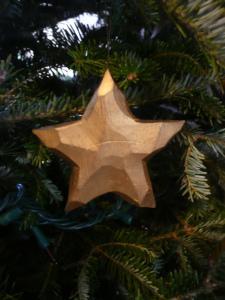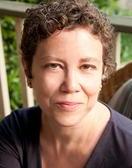
As I head off this morning to the annual Lessons and Carols service with our interfaith community, I thought I would repost this essay from 2010…
On Sunday, our community of more than 100 interfaith families held our annual Lessons and Carols service, in anticipation of Christmas. The fifth-graders tied toy stuffed sheep and donkeys to their heads, and acted out the nativity scene. My son played djembe, my daughter sang with the choir while dandling someone’s baby on her knee. Together, we pondered the story of the the angels, the wisemen, the star.
As always, as an interfaith community, our aim is not to meld, mash-up, mix, water-down or confuse our two religions. Instead, we strive to celebrate each holiday, whether Jewish or Christian, with full respect and all the trimmings. So how and why are these celebrations different from those you would find in any church or synagogue? Often, we begin and end a celebration by reciting our interfaith responsive reading, which is not a statement of creed, but a recognition that some of us are Jews, some of us are Christians, some of us have interfaith identities, and we are all equal members of this community. For me, simply knowing that we are an interfaith community changes my perception of any event: ancient rituals, songs and prayers, shimmer with the newness of radical inclusivity.
But also, our clergy, and our members, speak from their interfaith experiences, putting each holiday into our interfaith context. For instance, this week, our rabbi spoke of what Christmas means to him as a Jew. He hears the universal message of Christmas as the existence of God in the poor, the oppressed, the excluded, the “holy other.” He sees God in the pregnant girl, the baby born into poverty, the lowly shepherds, the mysterious travellers who came bearing gifts from afar. You do not have to believe that Jesus was the only human incarnation of God to be inspired by this narrative.
For many of our members, being part of an interfaith community gives them an opportunity to connect to family traditions and history, rather than suppressing them. At our service this week, Jonathan Brown spoke of his great grandfather, who was Head Chorister in the original “Nine Lessons and Carols,” created 130 years ago in Truro, Cornwall. Jonathan explains, “The service was designed to be as inclusive as possible: non-denominational, no creeds, no ceremonies or communion.” Of course, at the time, virtually everyone in Cornwall was Christian, but the idea of expanding this tradition to include Jonathan’s Jewish wife, his interfaith son, feels somehow organic and true.
As an interfaith community, we encourage families to take children to church, to synagogue, to celebrate with extended family, to maintain their connections to ancient traditions. This week, Jonathan and his family will return to his birthplace in Cornwall, and his son will be the fifth generation to take part in the Lessons and Carols service there.
But we also know that by providing a space and time to celebrate together, as an interfaith community, we help each other through the moments of dissonance and alienation that inevitably come along with the exuberance and thrill of our pioneering cross-cultural and cross-religious relationships.
Another member of our community confessed to me this week that he had bought his wife a Christmas present for the first time, after decades of marriage. A most loving and supportive husband, as a Jew he just had not been able to transcend the bitter history of religious conflict and wrap his head around the idea of a Christmas gift. He credited our interfaith community with his shift in thinking, and his ability to finally arrive, bearing a gift from afar.

